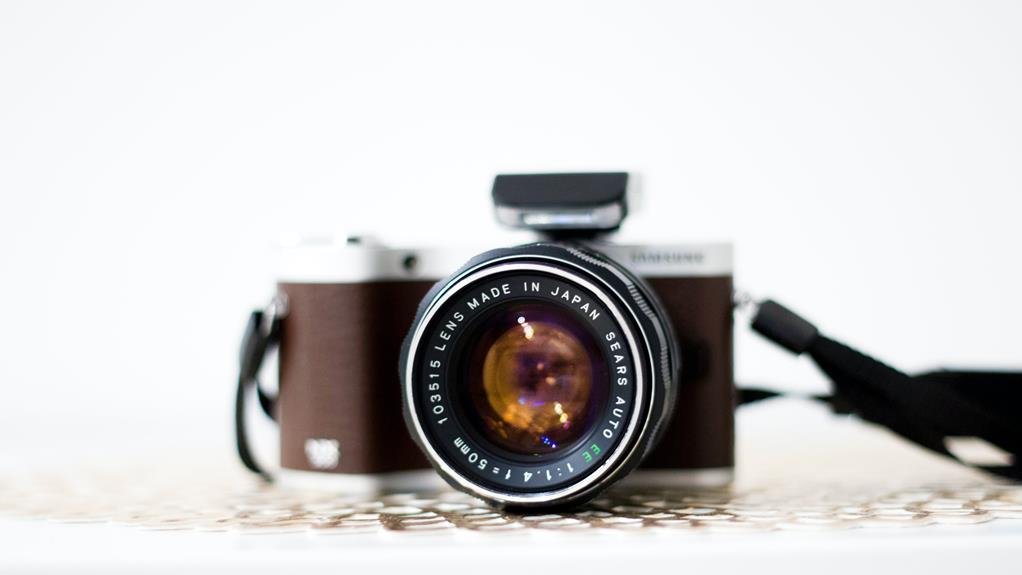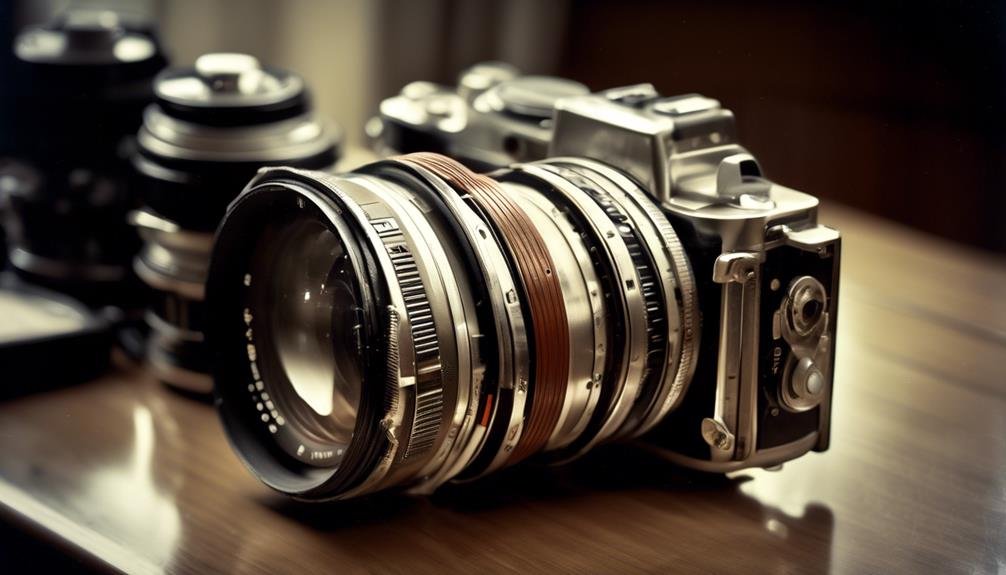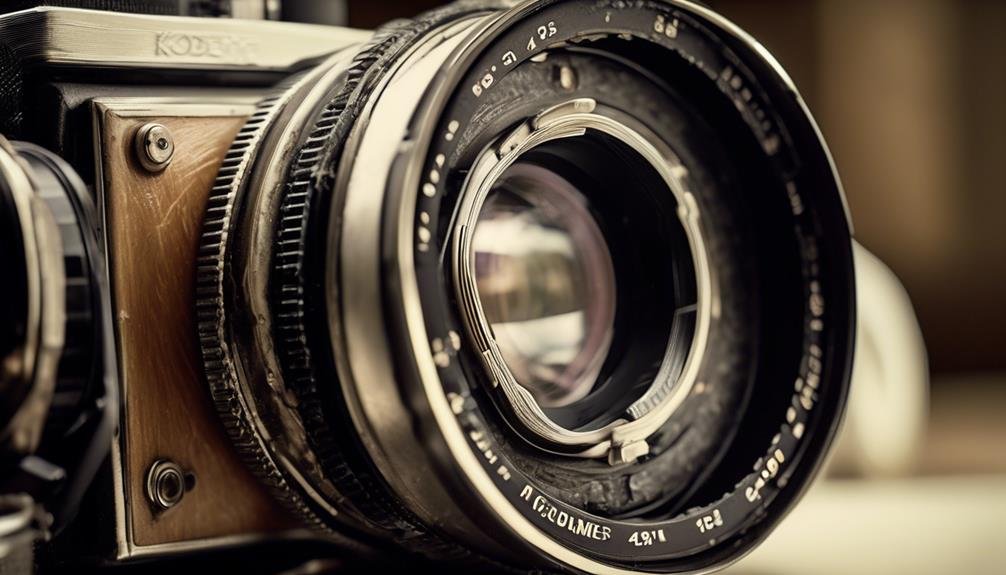
As photographers, we constantly seek to broaden our creative horizons, and one way to do that is by exploring the world of vintage lenses and adapting them to modern camera bodies. Understanding vintage lens mounts and evaluating compatibility factors can open up a whole new realm of photographic possibilities. However, the process of adapting vintage lenses to modern mirrorless cameras comes with its own set of challenges that need to be navigated. Yet, the rewards of using vintage lenses on modern mirrorless bodies can be substantial, offering unique optical characteristics and a distinct aesthetic that can elevate our photographic work to new heights.
Understanding Vintage Lens Mounts
When adapting vintage lenses to modern camera bodies, understanding the various vintage lens mounts is essential for achieving seamless compatibility and optimal performance. Identifying the specific lens mount of a vintage lens is the first step in the process. This information can usually be found on the lens itself or through online research. Different vintage lenses were designed with specific mounts such as M42, Nikon F, Canon FD, and many others. Researching the compatibility factors between the vintage lens mount and the modern camera body is crucial. It involves understanding the physical and mechanical aspects of both the lens and the camera body to ensure they can work together harmoniously. Additionally, knowing the flange focal distance of the vintage lens mount is vital for determining the correct adapter required to achieve infinity focus on the modern camera body. By understanding these intricacies of vintage lens mounts, photographers and videographers can unlock a treasure trove of creative possibilities and breathe new life into classic optics.
Evaluating Lens Compatibility Factors
Understanding the compatibility factors between vintage lenses and modern camera bodies is crucial for achieving seamless integration and optimal performance. When evaluating lens compatibility, it's essential to consider the condition of the lens and its impact on focus accuracy. The physical condition of a vintage lens can significantly affect its performance on a modern camera body. Scratches, fungus, or internal dust can all impact image quality and the overall usability of the lens. Additionally, assessing the focus accuracy of a vintage lens is vital. Some older lenses may have issues with accurate focusing due to wear and tear over time. Evaluating the smoothness of the focus ring and the precision of the focus markings can provide valuable insights into the lens's usability with a modern camera body. By thoroughly assessing these compatibility factors, photographers can make informed decisions about which vintage lenses are suitable for adapting to their modern camera bodies, ensuring a seamless and high-performing integration that meets their innovative needs.
Adapting Vintage Lenses to Mirrorless Cameras

Adapting vintage lenses to mirrorless cameras requires careful consideration of the lens mount compatibility and the availability of suitable adapters for seamless integration. When it comes to lens compatibility, mirrorless cameras offer a distinct advantage. Due to their shorter flange distance, they can accommodate a wider range of vintage lenses from various manufacturers. This opens up a world of creative possibilities for photographers, allowing them to experiment with different optical characteristics and rendering styles.
One of the key advantages of using vintage lenses on mirrorless cameras is the ability to leverage the camera's advanced features while retaining the unique qualities of these older optics. With the appropriate adapter, photographers can enjoy modern functionalities such as focus peaking, in-body image stabilization, and electronic viewfinders, enhancing the overall shooting experience with vintage glass.
Furthermore, adapting vintage lenses to mirrorless cameras can breathe new life into these optics, providing a fresh perspective on photography. It allows photographers to blend the nostalgia of vintage lenses with the cutting-edge technology of modern mirrorless cameras, resulting in a truly innovative and creative photographic toolset.
Overcoming Challenges of Using Vintage Lenses
Using vintage lenses can present various challenges, but with patience and the right approach, photographers can overcome these obstacles to unlock the full potential of these classic optics. When it comes to focusing techniques, vintage lenses often require manual focus, which can be a departure from the autofocus capabilities of modern lenses. However, with practice and familiarity, photographers can hone their manual focusing skills, leading to precise and intentional focusing that adds a unique touch to their images.
Another challenge to consider is aperture control. Unlike modern lenses that communicate electronically with the camera body to control aperture, vintage lenses may require manual adjustment using an aperture ring. This manual control allows for creative flexibility, but it also demands a deeper understanding of how aperture settings impact exposure and depth of field. With experience, photographers can master the art of adjusting aperture on vintage lenses to achieve the desired effects in their photography.
Advantages of Vintage Lenses on Modern Mirrorless Bodies

Navigating the challenges of using vintage lenses can lead to a deeper appreciation for the craft of photography, and when paired with modern mirrorless bodies, these classic optics offer a range of advantages that elevate the photographic experience. Vintage lenses bring a unique character to images, providing photographers with a tool to explore creative photography and achieve unique aesthetics. When mounted on modern mirrorless bodies, these lenses unlock a whole new world of possibilities, blending the best of both eras in photography.
| Advantages of Vintage Lenses on Modern Mirrorless Bodies | |
|---|---|
| Enhanced Creative Photography | Vintage lenses encourage experimentation, enabling photographers to capture images with a distinctive and artistic flair. |
| Unique Aesthetics | These lenses produce a distinct look, from dreamy, soft focus to rich, vibrant colors, adding a timeless and vintage feel to photographs. |
| Adaptability | With the right adapters, vintage lenses can be easily mounted on modern mirrorless bodies, offering compatibility across different camera systems. |
| Cost-Effective Solution | Investing in vintage lenses can be a more budget-friendly option compared to purchasing modern equivalents, delivering excellent quality at a lower cost. |
Incorporating vintage lenses into modern mirrorless setups can truly enhance the overall photographic experience, allowing photographers to push the boundaries of creativity and achieve stunning, one-of-a-kind images.
Frequently Asked Questions
Are There Any Specific Vintage Lenses That Are Known to Work Particularly Well With Specific Modern Camera Bodies?
Some vintage lenses pair beautifully with modern camera bodies. They offer unique characteristics like creamy bokeh for portrait photography. Popular choices for landscape photography include the Helios 44-2 and Canon FD 24mm.
What Are the Potential Risks or Drawbacks of Adapting Vintage Lenses to Modern Camera Bodies?
Potential drawbacks of adapting vintage lenses to modern camera bodies include image quality issues, compatibility challenges, and lens condition concerns. The adapting process may affect vintage lens performance, so it's crucial to carefully consider these factors.
Can Vintage Lenses Be Used With Autofocus and Other Modern Camera Features When Adapted to Mirrorless Bodies?
Sure, vintage lenses can be adapted to mirrorless bodies, but autofocus compatibility can be limited. Modern features like electronic communication may not fully function. However, manual focus and aperture adjustments are typically reliable.
How Can I Tell if a Vintage Lens Is in Good Condition and Worth Adapting to a Modern Camera Body?
Assessing value and quality check of vintage lenses involves examining optical performance, mechanical condition, and compatibility with modern camera bodies. Understanding adaptation challenges and potential benefits helps in deciding whether the lens is worth adapting.
Are There Any Common Issues or Problems That Arise When Adapting Vintage Lenses to Mirrorless Camera Bodies That I Should Be Aware Of?
We've encountered a few challenges adapting vintage lenses to mirrorless camera bodies. Compatibility issues with focus and aperture control have been common, but with the right adapters and adjustments, we've achieved some stunning results.
